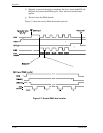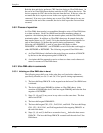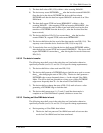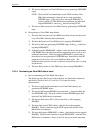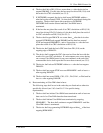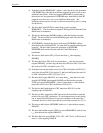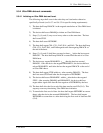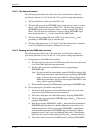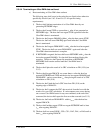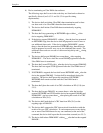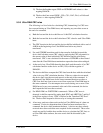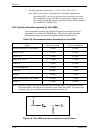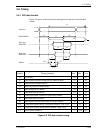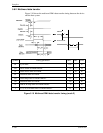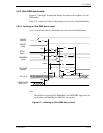
Interface
5-144 C141-E221
5.5.4.2 The data out transfer
The following steps shall occur in the order they are listed unless otherwise
specifically allowed (see 5.6.3.8 and 5.6.3.2 for specific timing requirements):
1) The host shall drive a data word onto DD (15:0).
2) The host shall generate an HSTROBE edge to latch the new word no sooner
than t
DVS
after changing the state of DD (15:0). The host shall generate an
HSTROBE edge no more frequently than t
CYC
for the selected Ultra DMA
Mode. The host shall not generate two rising or falling HSTROBE edges
more frequently than 2 t
CYC
for the selected Ultra DMA mode.
3) The host shall not change the state of DD (15:0) until at least t
DVH
after
generating an HSTROBE edge to latch the data.
4) The host shall repeat steps (1), (2) and (3) until the data transfer is complete
or an Ultra DMA burst is paused, whichever occurs first.
5.5.4.3 Pausing an Ultra DMA data out burst
The following steps shall occur in the order they are listed unless otherwise
specifically allowed (see 5.6.3.9 and 5.6.3.2 for specific timing requirements).
a) Host pausing an Ultra DMA data out burst
1) The host shall not pause an Ultra DMA burst until at least one data word
of an Ultra DMA burst has been transferred.
2) The host shall pause an Ultra DMA burst by not generating an
HSTROBE edge.
Note: The device shall not immediately negate DMARQ to initiate Ultra
DMA burst termination when the host stops generating HSTROBE
edges. If the host does not assert STOP, in order to initiate Ultra
DMA burst termination, the device shall negate DDMARDY- and
wait t
RP
before negating DMARQ.
3) The host shall resume an Ultra DMA burst by generating an HSTROBE edge.
b) Device pausing an Ultra DMA data out burst
1) The device shall not pause an Ultra DMA burst until at least one data
word of an Ultra DMA burst has been transferred.
2) The device shall pause an Ultra DMA burst by negating DDMARDY-.
3) The host shall stop generating HSTROBE edges within t
RFS
of the device
negating DDMARDY-.
4) If the device negates DDMARDY- within t
SR
after the host has generated an
HSTROBE edge, then the device shall be prepared to receive zero or one
additional data words. If the device negates DDMARDY- greater than t
SR
after the host has generated an HSTROBE edge, then the device shall be
prepared to receive zero, one or two additional data words. The additional
data words are a result of cable round trip delay and t
RFS
timing for the host.
5) The device shall resume an Ultra DMA burst by asserting DDMARDY-.



